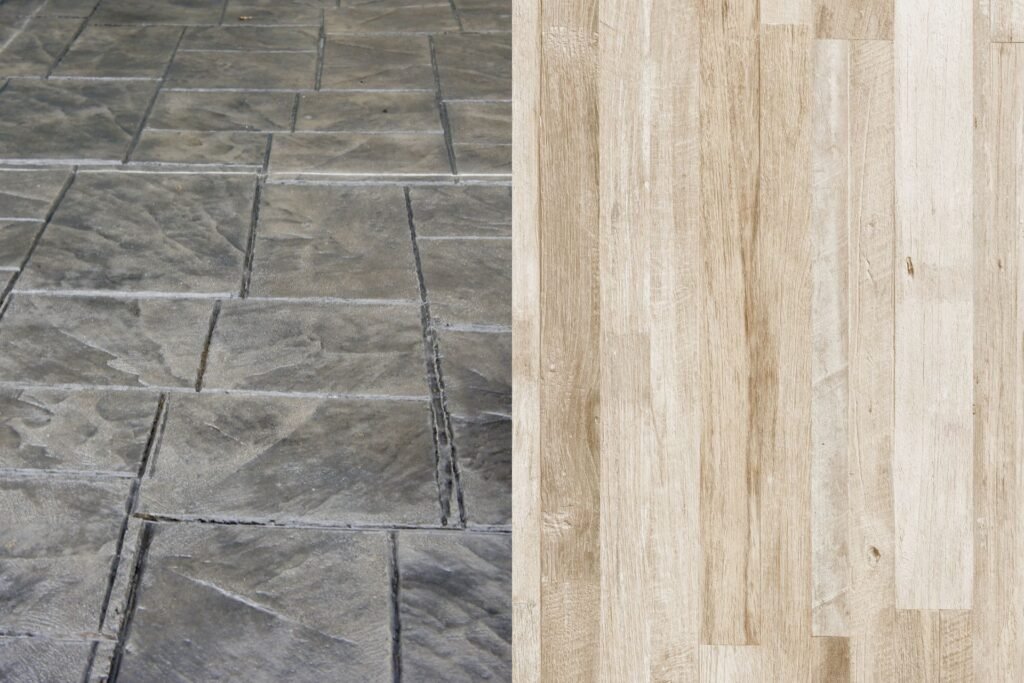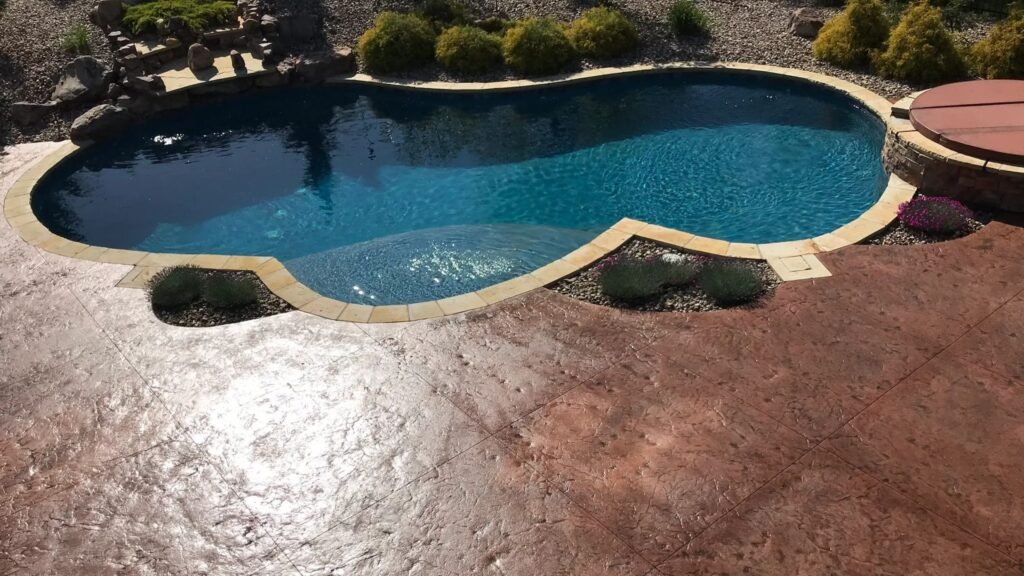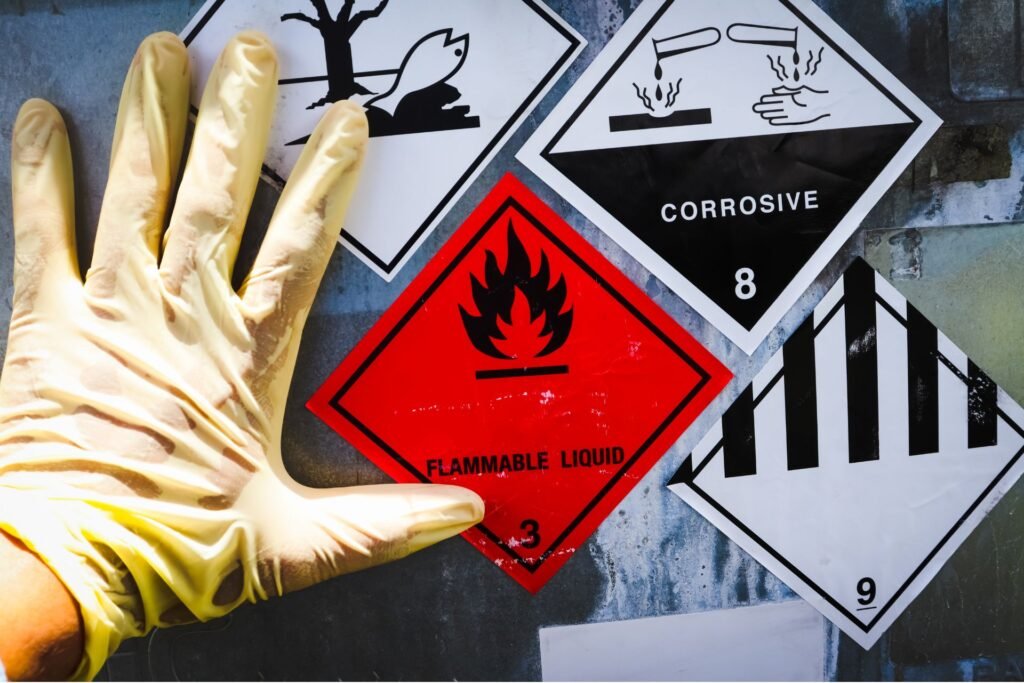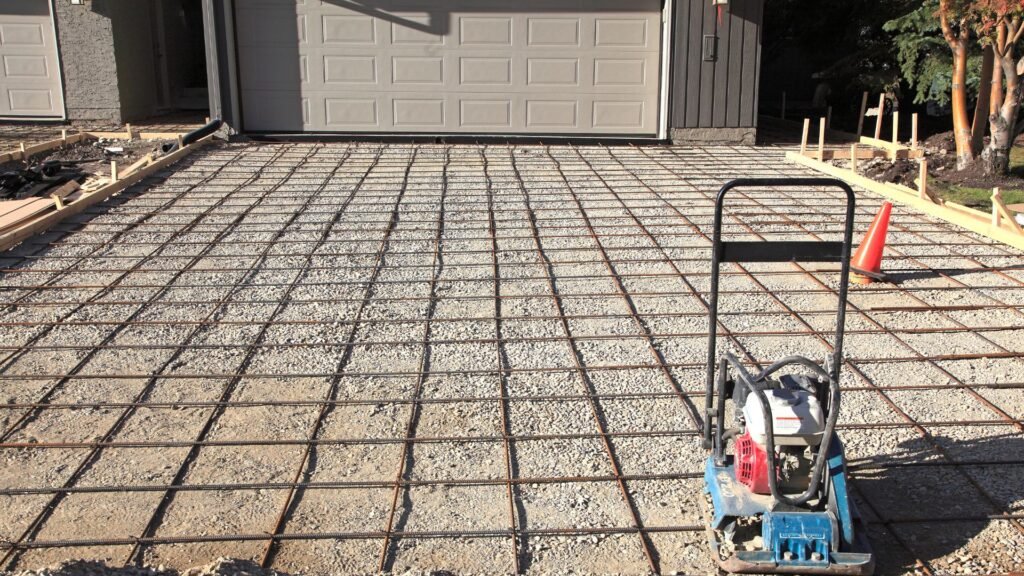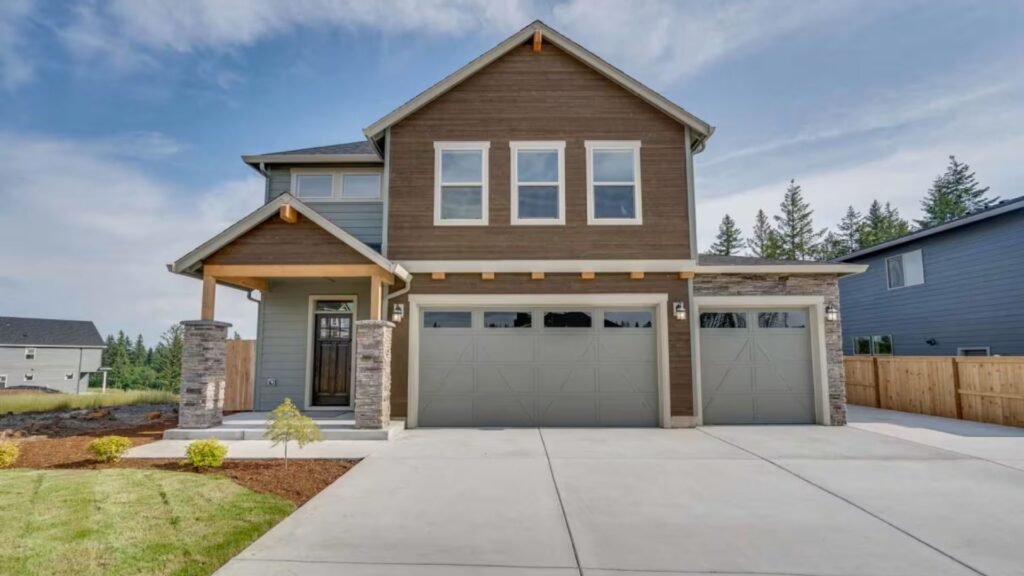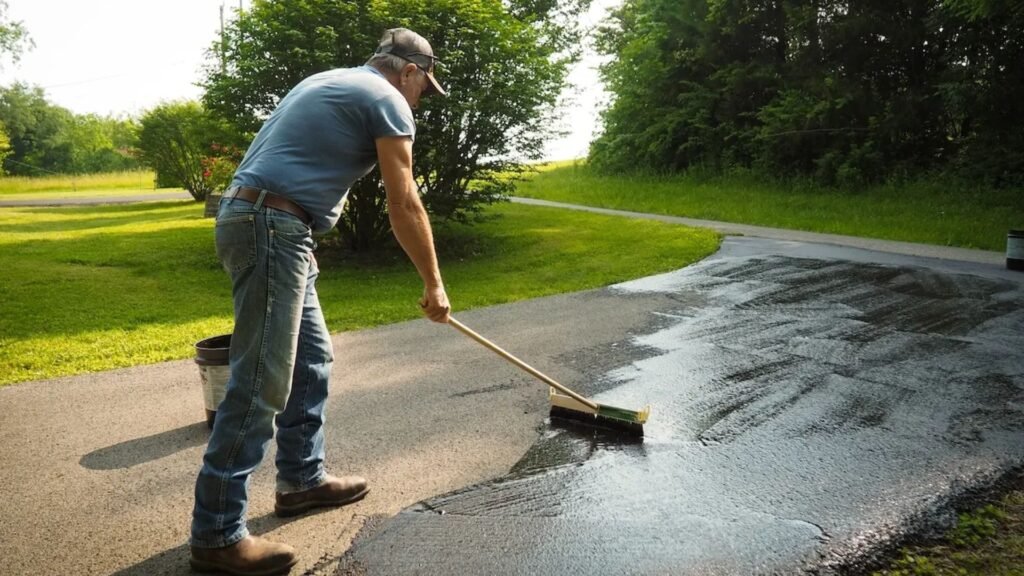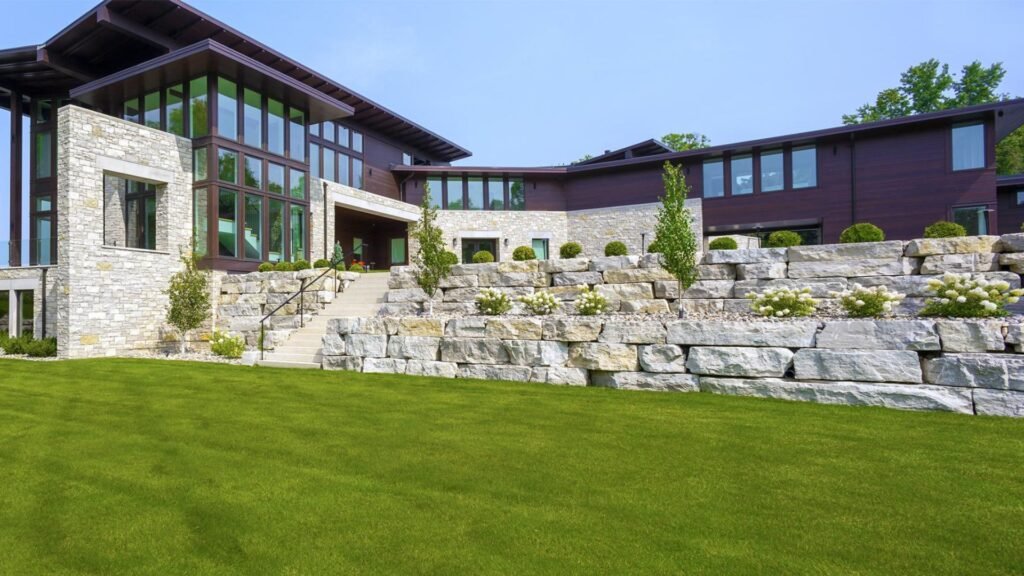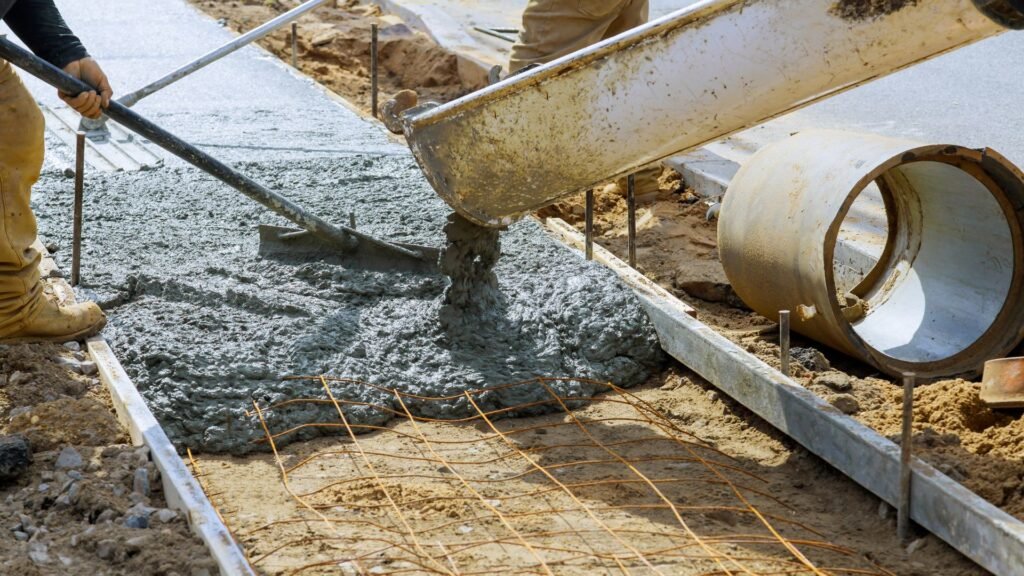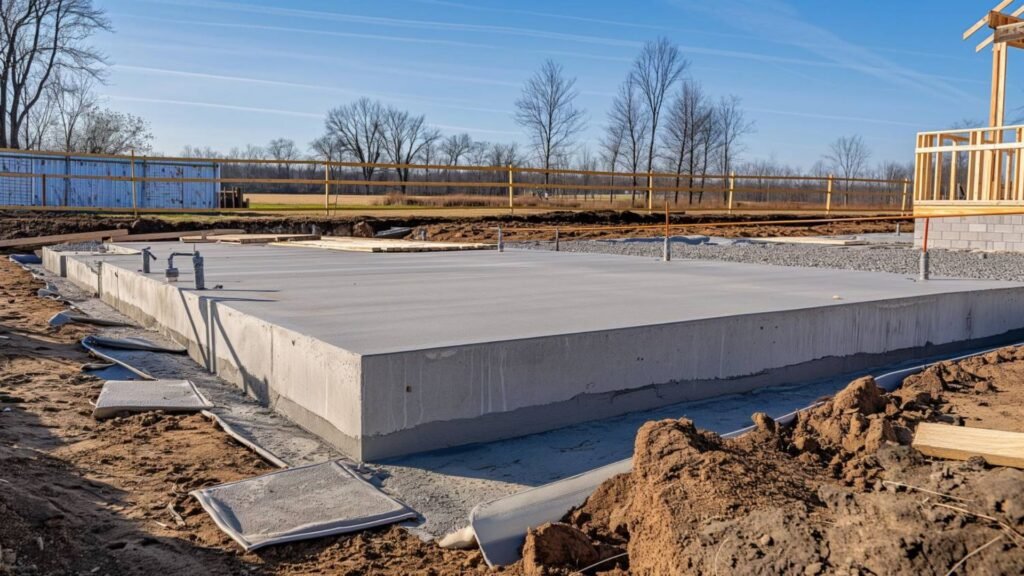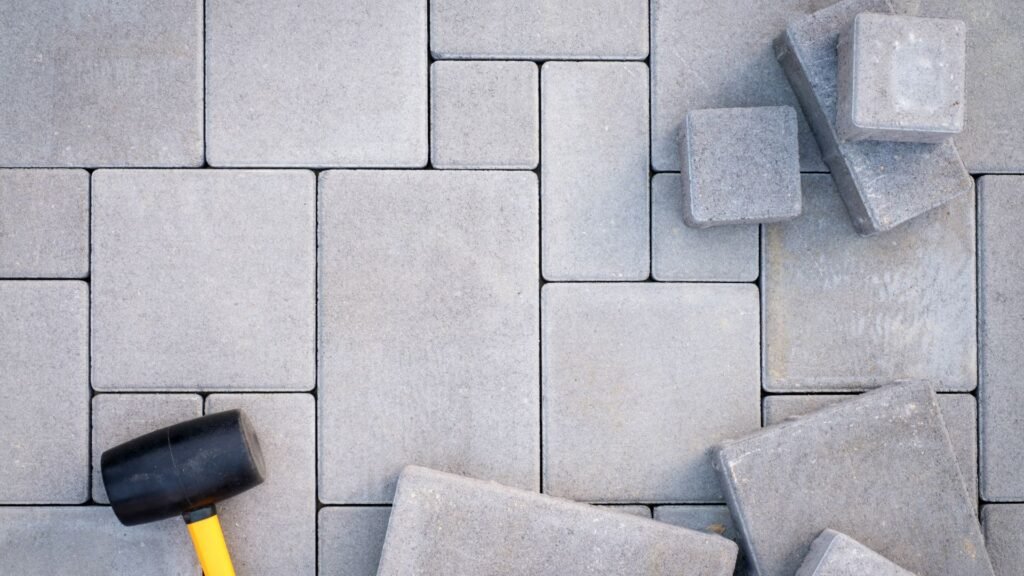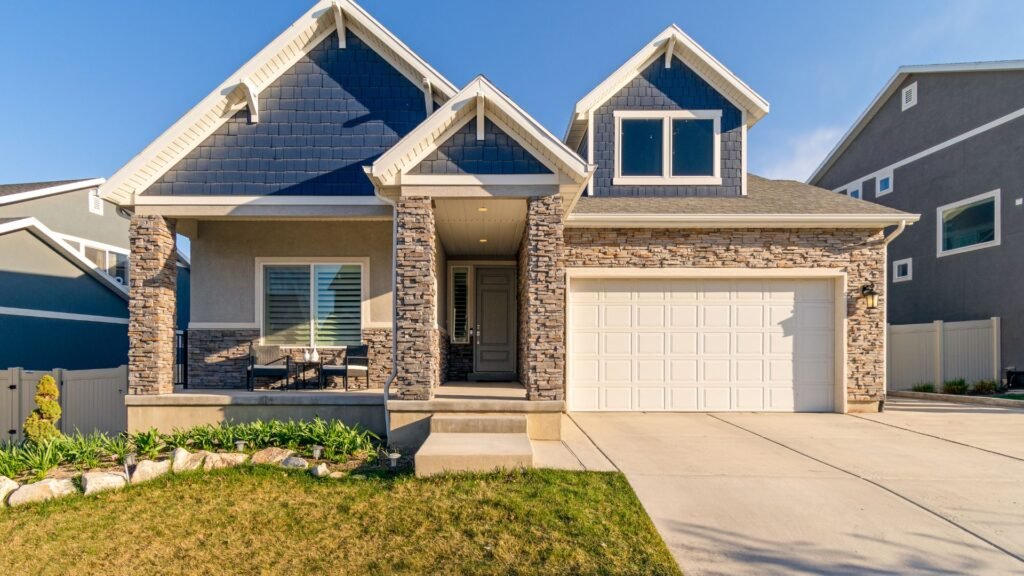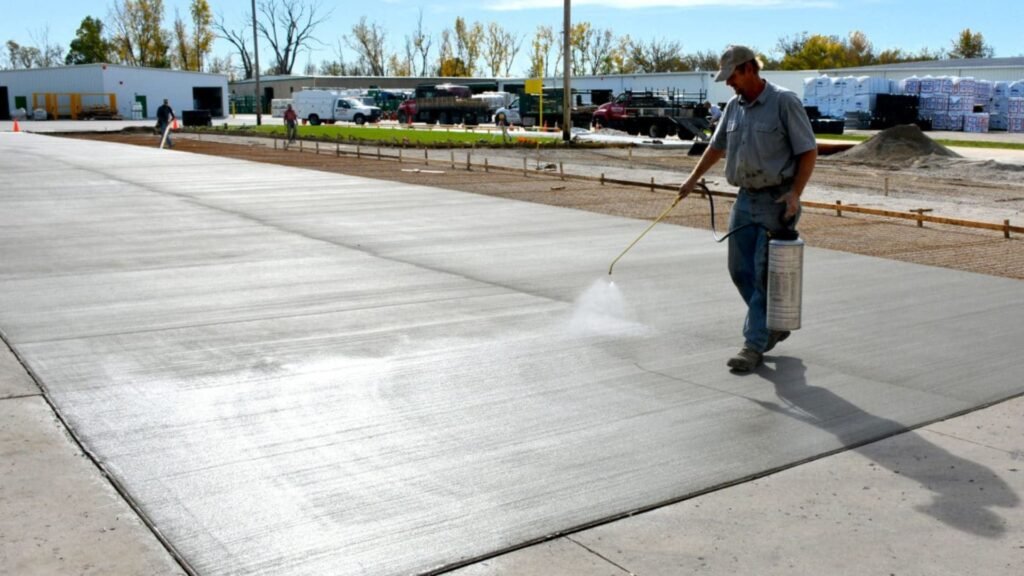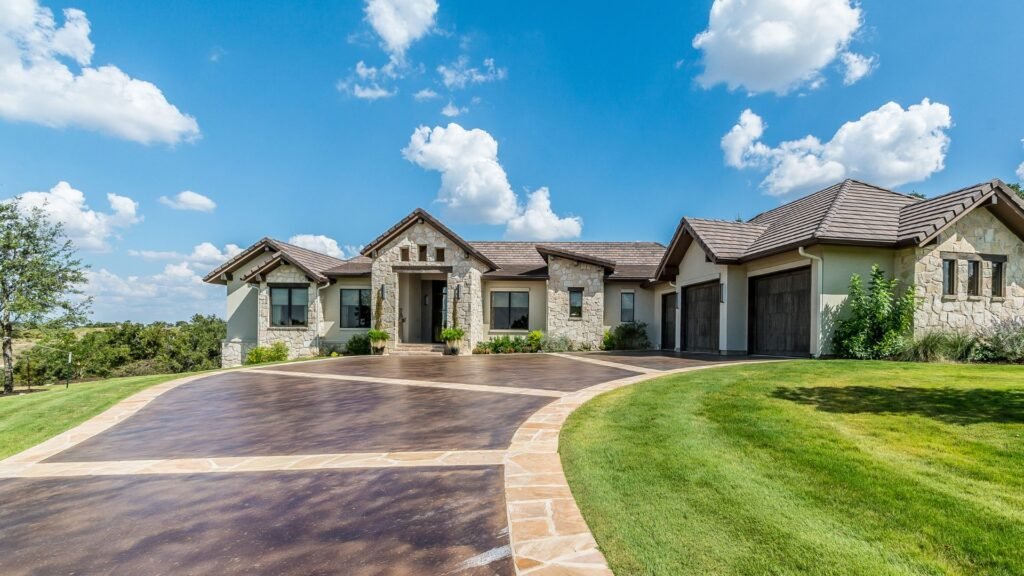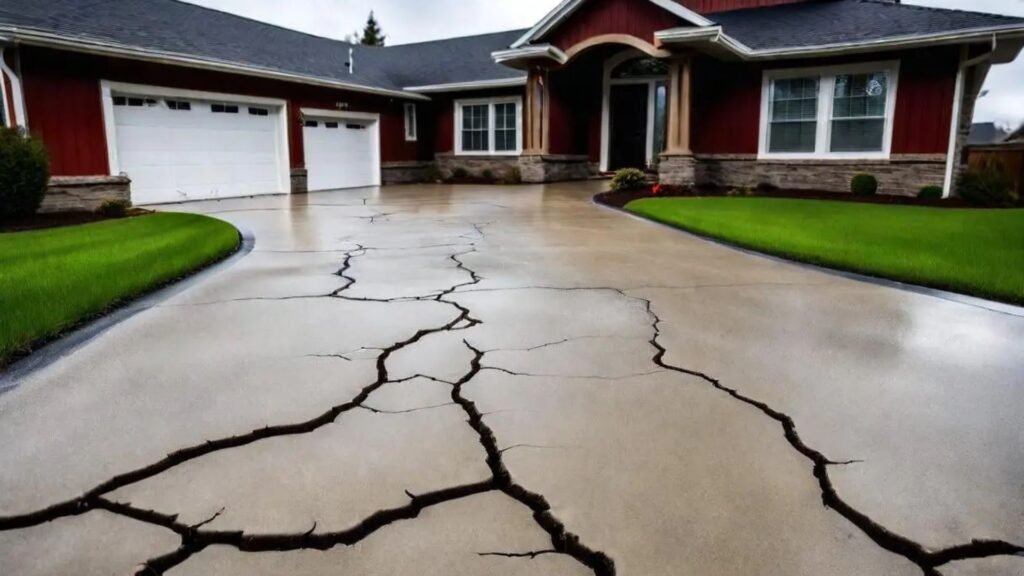Welcome to our guide on one of the most common questions in DIY and home improvement projects: “Is it OK to pour concrete on dirt?” Whether you’re planning a new patio, driveway, or walkway, you might be tempted to skip some of the groundwork (literally) and wonder if pouring concrete directly onto dirt is a viable shortcut. While it may seem like a simple and cost-saving solution, there are important factors to consider that can greatly impact the durability and longevity of your project. In this post, we’ll explore whether pouring concrete on dirt is a good idea, what risks are involved, and how to do it right if you choose to move forward. Let’s dive in!
Yes, you can pour concrete on dirt, but it is not recommended without proper preparation. Pouring directly on dirt can lead to cracks, shifting, and uneven surfaces due to soil instability and moisture. To ensure durability, it’s best to compact the soil, add a gravel or sand base, and consider a vapor barrier before pouring the concrete. Proper groundwork helps prevent long-term issues and ensures a lasting, stable surface.
Table of Contents
Why People Consider Pouring Concrete On Dirt
When tackling a home improvement project or a backyard renovation, many people weigh the pros and cons of various methods to get the job done efficiently. One common approach that often comes up is pouring concrete directly on dirt. While this might not be the best practice in professional construction, there are a few reasons why some homeowners and DIY enthusiasts consider this method.
Saving Time and Money
One of the primary reasons people contemplate pouring concrete on dirt is the potential savings in both time and money. Proper preparation before laying concrete typically involves several steps, such as grading the area, compacting the soil, and laying down gravel or sand as a base. These steps, while essential for a long-lasting foundation, can be time-consuming and add to the overall cost of a project. By skipping these preparatory measures, individuals can significantly reduce both labor and material expenses.
For small DIY projects like simple walkways or garden paths, people might feel that the time saved outweighs the risk of future complications. The logic here is simple: if it’s a quick project, why not take a shortcut?
Perception of Simplicity
Another reason why people might be tempted to pour concrete on dirt is the perception that it’s an easy fix for small-scale projects. Many individuals approach smaller tasks, such as patios or minor pathways, with the mindset that they don’t require extensive preparation. They might think, “It’s just a garden path,” or “It’s not a driveway that needs to bear a lot of weight,” leading them to believe that this seemingly simpler solution will suffice. This misconception stems from the fact that concrete seems like a solid, durable material that can withstand most conditions—regardless of what lies beneath it.
However, this perception can be misleading. While it might appear straightforward, concrete is only as strong as the foundation it sits on. Pouring it directly on dirt may seem like a quick fix, but without a solid base, issues like cracking and shifting are likely to arise over time.
Temporary vs. Permanent Solutions
Some homeowners also view pouring concrete on dirt as a temporary solution, particularly for areas that don’t see much foot traffic or heavy use. For example, a concrete slab for a garden shed or a footpath in a less-trafficked area may seem like a project where perfection isn’t necessary. The mindset here is that the concrete doesn’t need to last decades—it just needs to serve its purpose in the short term.
However, even in low-traffic areas, the quality of the foundation can still have a significant impact on the longevity of the project. A temporary solution can turn into a permanent headache if the concrete starts to crack or shift, leading to costly repairs down the line. It’s important to remember that concrete is a long-lasting material, and even if the project seems “temporary,” the issues caused by poor foundation prep might last much longer than anticipated.
While pouring concrete on dirt may seem like a time-saving, cost-effective approach for some, it’s essential to weigh the potential long-term consequences. The temptation to cut corners is understandable, but the short-term benefits often give way to more significant problems in the future. Proper preparation of the foundation is crucial for ensuring the durability and longevity of any concrete structure, regardless of its size or intended use.

What Happens When You Pour Concrete On Dirt?
Pouring concrete on dirt may seem like a quick and easy solution when building patios, driveways, or walkways. However, doing so without proper preparation can lead to several structural issues down the line. The dirt beneath the concrete plays a crucial role in determining the long-term durability and stability of the surface. Let’s explore some of the most significant problems that arise when you pour concrete directly on dirt.
1. Shifting Soil: A Recipe for Cracked Concrete
Dirt, by its very nature, is not a stable surface. Over time, soil can shift, erode, or settle due to factors such as changes in weather, water exposure, and natural movement within the earth. This instability poses a serious threat to the integrity of the concrete poured on top of it.
When soil shifts or settles unevenly, it creates a lack of support for the concrete slab. Without a stable foundation, the concrete can crack or develop large gaps. Even if the cracks are small at first, they will eventually worsen, especially if exposed to traffic or heavy loads. To avoid this, it’s crucial to understand that dirt alone can’t provide the solid foundation concrete needs.
2. Moisture Issues: A Hidden Threat
One of the biggest challenges with pouring concrete on dirt is the potential for moisture issues. Dirt naturally retains moisture, especially after rain or watering. When concrete is laid directly on top of moist dirt, that moisture can slowly seep into the concrete over time.
This moisture intrusion can cause various problems:
- Expansion and contraction: Concrete expands when it absorbs moisture and contracts when it dries out. These repeated cycles can cause cracks or even weaken the overall structure of the slab.
- Deterioration: Prolonged exposure to moisture can lead to the gradual breakdown of concrete. The water can erode the cement and fine aggregates within the mix, compromising the concrete’s strength and leading to crumbling or surface damage.
- Frost heave: In colder climates, moisture in the soil can freeze and expand, pushing the concrete up and causing heaving or uneven surfaces.
To prevent these issues, proper drainage solutions and barriers between the dirt and concrete are essential to reduce moisture exposure.
3. Compaction and Settling: Building a Stable Base
Another major consideration when pouring concrete on dirt is ensuring the soil is adequately compacted. Loose or uncompacted dirt can create air pockets or weak areas beneath the concrete. As the ground naturally settles over time, these voids can cause the concrete to sink, creating uneven surfaces or even structural failures.
Proper compaction is the key to creating a solid, level foundation that can support the weight of the concrete slab and anything placed on top of it. Before pouring concrete, the dirt should be compressed using a mechanical compactor to eliminate air pockets and ensure the soil is tightly packed. If not, you risk dealing with a concrete surface that quickly becomes uneven, cracked, or sunken.
Pouring concrete directly onto dirt can result in various problems, including cracks, moisture damage, and uneven surfaces. The dirt beneath the concrete is prone to shifting, retaining moisture, and settling if not properly compacted. By taking the time to prepare a stable, well-compacted base and considering moisture control, you’ll ensure the longevity and durability of your concrete slab. Remember, investing in proper groundwork is essential to preventing costly repairs down the road!

Factors To Consider Before Pouring Concrete On Dirt
When planning to pour concrete directly on dirt, several critical factors must be considered to ensure the stability and longevity of the structure. The quality of the ground beneath the concrete plays a vital role in determining how well the concrete will hold up over time. Below, we’ll break down key considerations you need to address before starting your concrete project.
1. Soil Type: Understanding Your Foundation
One of the most important factors to consider before pouring concrete is the type of soil you are working with. The soil directly impacts the stability of the concrete and its ability to resist cracking, settling, and other issues over time. Here’s how different soil types affect the process:
- Clay Soil: Clay is known for its ability to hold water, which can lead to expansion and contraction based on moisture levels. This makes it unpredictable as a base for concrete. When clay becomes saturated, it swells, and when it dries out, it shrinks, potentially leading to significant shifts under the concrete. These movements can cause cracking and structural damage over time. If you’re working with clay, it’s crucial to either replace it with a more stable material or invest in proper soil stabilization methods.
- Sandy Soil: Sandy soils, unlike clay, drain water quickly, which can prevent water from pooling under your concrete. However, sand’s loose, granular nature means it can shift easily if not properly compacted. Without the right preparation, concrete poured on sandy soil may experience settling, which can lead to cracks and uneven surfaces. To mitigate this, proper compaction and possibly adding a layer of gravel can improve stability.
- Loam Soil: Loam, which is a mixture of sand, silt, and clay, is considered the ideal soil type for concrete projects. It strikes a balance between drainage and stability, making it more forgiving than pure clay or sand. However, even with loam, it’s essential to properly compact the soil and prepare the surface to ensure long-term success. No matter how stable the soil may seem, preparation is key to avoid future problems.
2. Climate and Weather Conditions: Timing is Everything
Weather conditions play a huge role in the success of a concrete pour, especially if you’re working directly on dirt. Climate and weather affect not only the curing process but also the integrity of the soil beneath the concrete. Here are some key weather-related concerns to keep in mind:
- Rain: Pouring concrete on wet, muddy soil is a recipe for disaster. If the ground is saturated from rain, the soil can become too soft, leading to uneven settling and a weak foundation for the concrete. Additionally, excess moisture in the soil can affect how the concrete cures, leading to a weaker final product.
- Snow and Freezing Temperatures: Cold weather can cause the water in the soil to freeze, expanding the ground beneath the concrete. When the ground thaws, it contracts, which can lead to shifting and cracks in the concrete. In regions with freezing temperatures, it’s vital to consider the frost line and ensure the soil is properly insulated or stabilized to avoid freeze-thaw cycles that could damage the structure.
- Extreme Heat: Hot, dry weather can cause the soil to lose moisture rapidly, especially in sandy or loose soils. This can lead to shrinking and shifting under the concrete, which can cause it to settle unevenly. Proper soil hydration and preparation, along with managing the curing process of the concrete, are essential in such conditions.
3. Weight and Load-Bearing Capacity: Assessing the Project’s Needs
The load-bearing capacity of the soil is another crucial factor to consider. The type of traffic and weight the concrete will need to support directly influences whether pouring on dirt is a viable option.
- Foot Traffic: If the concrete is intended for light use, such as walkways or patios that will only see foot traffic, dirt may provide an adequate foundation if properly compacted. However, it’s still essential to consider the type of soil and whether it can support the concrete without excessive settling or movement.
- Vehicle Traffic or Heavy Loads: When the concrete is meant to bear heavy loads, such as driveways, garage floors, or industrial spaces, the soil beneath must be carefully assessed. Dirt alone is unlikely to provide enough support for such weight over time, leading to cracks and structural damage. In these cases, it’s often necessary to add a gravel base, use geotextiles, or employ soil stabilization techniques to increase the ground’s load-bearing capacity and ensure the concrete remains stable.
Before pouring concrete on dirt, it’s essential to evaluate the soil type, consider the impact of local weather conditions, and assess the load-bearing requirements of your project. Proper ground preparation—whether through compaction, adding a gravel base, or using soil stabilization techniques—is critical to preventing issues like settling, cracking, and structural damage. Taking the time to address these factors can ensure your concrete project stands the test of time, providing a durable and stable surface for years to come.

Proper Preparation: How To Pour Concrete Over Dirt Correctly
Pouring concrete directly over dirt is a common practice for many construction projects, but it requires careful preparation to ensure a solid, long-lasting result. Whether you’re working on a patio, driveway, or foundation, following the right steps ensures that your concrete pour will be durable, resistant to cracking, and able to withstand the test of time. Below is a detailed step-by-step guide on how to properly prepare the area and pour concrete over dirt.
Step 1: Site Assessment and Planning
Before starting, it’s crucial to thoroughly evaluate the site. A proper site assessment will help determine if additional materials like gravel or sand are necessary to create a stable foundation. For areas with poor drainage or soft soil, these materials are essential for preventing future issues such as settling or cracking. Check the soil condition by digging into it — if the dirt is loose or waterlogged, you’ll likely need a gravel base for better support. Additionally, planning the layout of your project in advance ensures that everything from the edges to the thickness of the concrete is calculated correctly.
Step 2: Clearing the Area
Once the site assessment is done, the next step is to clear the area where the concrete will be poured. This means removing any grass, plants, roots, or debris that could interfere with the concrete’s stability. Vegetation can lead to uneven settling or even push through the concrete in the future, causing cracks. You’ll also want to remove large rocks or other obstructions that could compromise the uniformity of the concrete slab. Ensuring a clean and debris-free workspace at this stage will save you from headaches down the road.
Step 3: Compacting the Soil
One of the most important steps in the process is compacting the soil. Loose dirt can lead to shifting and settling, which can cause the concrete to crack over time. To compact the soil, use a plate compactor or tamper to pack it down evenly. For best results, aim to compact the soil to a depth of about 4-6 inches. This helps create a solid, level foundation that supports the weight of the concrete. Ensure the entire area is evenly compacted, focusing on corners and edges where movement is more likely to occur.
Step 4: Adding a Base Layer
Gravel or Crushed Stone: For most projects, especially those in areas prone to water retention, adding a base layer of gravel or crushed stone is highly recommended. This layer improves drainage and provides added support, reducing the risk of concrete cracks caused by water pressure or soil movement. Spread the gravel evenly, and compact it down to about 3-4 inches in thickness, ensuring a stable surface for your concrete pour.
Sand Layer: In some cases, a layer of sand may be added on top of the gravel to create a smoother and more compactable surface. Sand helps to fill any gaps between the gravel, creating a firm, even base for the concrete. A 1-2 inch layer of sand is typically sufficient. Like gravel, the sand should be compacted thoroughly to prevent settling after the concrete has been poured.
Step 5: Installing a Vapor Barrier (Optional but Recommended)
Though not always required, installing a vapor barrier is an excellent precaution, particularly if you’re working in an area with high moisture content. A vapor barrier helps prevent moisture from seeping up through the concrete, which can lead to cracks or other damage over time. It also improves insulation and protects the concrete from ground humidity, which is especially useful in garages, basements, or areas where you’re likely to have long-term exposure to moisture. A 6 mil plastic sheeting works well for this purpose—place it directly over the compacted base before pouring the concrete.
Step 6: Pouring and Finishing the Concrete
After properly preparing the base, you’re ready to pour the concrete. Begin by ensuring that your concrete mixture is well-prepared and that it covers the base evenly. The well-compacted dirt, along with the gravel and sand layers, provides a stable foundation that prevents the concrete from shifting or cracking. Once the concrete is poured, use a screed board to level the surface, followed by a float tool to smooth it out. Finally, finish the surface to your desired texture and allow adequate curing time, which is essential for the concrete to gain its full strength and durability.
Proper preparation is the key to a successful concrete pour over dirt. By carefully assessing the site, clearing debris, compacting the soil, and adding a solid base layer, you can ensure that your concrete project lasts for years without cracks or instability. Whether you’re pouring a driveway, walkway, or foundation, these steps will help you achieve a smooth, durable result that stands the test of time.

Risks Of Pouring Concrete Directly On Dirt Without Preparation
Pouring concrete directly onto dirt without proper preparation may seem like a shortcut, but it introduces significant risks that can compromise the integrity, durability, and overall performance of your project. Here are some key reasons why thorough preparation is crucial:
Cracking and Shifting
One of the primary risks of pouring concrete on unprepared soil is cracking. If the soil beneath the concrete isn’t properly compacted, it can settle unevenly under the weight of the concrete, leading to structural instability. Additionally, if the soil contains too much moisture, it can cause the concrete to expand and contract, which increases the likelihood of cracks forming over time. This not only weakens the concrete but also affects its longevity.
Water Damage and Erosion
Moisture control is essential when working with concrete. When you pour concrete directly on dirt without a proper subbase or drainage, water from the soil can seep upward into the concrete. Over time, this moisture infiltration weakens the material, causing erosion from beneath. In colder climates, the water in the soil can freeze and expand, further deteriorating the concrete slab and leading to frost heaves. This compromises both the stability and appearance of your project.
Costly Repairs
While skipping the preparation process might seem like a way to save time and money, it can lead to costly consequences down the road. Poorly prepared soil can result in cracks, sinking, or shifting of the concrete, requiring expensive repairs or even full slab replacements. The initial investment in properly preparing the ground is far less costly than dealing with structural failures later on.
Poor Aesthetic and Functionality
Without proper ground preparation, the concrete may not remain level, leading to an uneven surface. This affects the overall aesthetic appeal of the finished product. Furthermore, uneven concrete surfaces are not only unsightly but also present functional issues, such as creating tripping hazards, drainage problems, and reducing the usability of the space. Proper preparation ensures that the concrete remains smooth, level, and long-lasting, both in appearance and function.
While pouring concrete directly on dirt may seem like a convenient option, the risks far outweigh the short-term benefits. Proper site preparation ensures a more durable, functional, and aesthetically pleasing result, saving you from potential headaches and costly repairs in the future.

When It Might Be OK To Pour Concrete On Dirt
While it’s generally best practice to prepare a stable base before pouring concrete, there are a few scenarios where pouring concrete directly on dirt might be acceptable. Let’s explore these specific cases, but it’s crucial to note that even in these situations, potential risks should be carefully considered.
1. Small, Low-Traffic Projects
In cases where the project is small and won’t bear heavy loads, pouring concrete on dirt might work. Think about small garden paths, decorative features, or backyard walkways that won’t be subjected to much foot traffic or weight. Since these areas aren’t supporting large structures, the risk of cracking or sinking is lower than it would be for a larger, more significant project like a driveway or foundation.
For instance, a small patio used for light recreational purposes or a narrow footpath in your garden may hold up fairly well without an extensive sub-base. However, keep in mind that even for these low-traffic projects, proper grading and soil compaction can still significantly extend the lifespan of the concrete.
2. Temporary Solutions
There are also cases where a temporary or short-term solution is needed. If you’re creating something like a temporary shed base or an area that will only be in use for a few months, pouring concrete on dirt might be a viable option. This could be especially true if you’re working on a project that you plan to replace or upgrade in the near future.
While this approach might save you time and money upfront, it’s important to remember that it comes with risks. The dirt beneath the concrete can shift, causing cracks or uneven surfaces over time. If longevity isn’t a priority, this might be an acceptable trade-off for short-term convenience.
3. Consulting a Professional
If you’re ever uncertain about whether it’s safe to pour concrete directly on dirt for your particular project, it’s always a good idea to consult a professional. Soil conditions, weather patterns, and the intended use of the concrete surface all play critical roles in determining whether this approach is feasible.
A professional can help you assess the site conditions, recommend any necessary preparations, and give you peace of mind knowing that your project will be built to last. Even small projects can benefit from expert advice, especially when it comes to preventing issues like cracking, sinking, or drainage problems down the line.

Expert Advice: What Professionals Recommend
When it comes to laying a solid foundation for concrete work, expert advice is invaluable. Professional contractors follow industry standards to ensure the longevity and durability of the structures they build. Let’s dive into why pouring concrete directly on dirt is a practice experts generally avoid, and the long-term benefits of doing it the right way.
Why Contractors Avoid Pouring Concrete Directly on Dirt
One of the main reasons professional contractors avoid pouring concrete directly on dirt is the instability of the ground. Dirt shifts and settles over time, and this movement can cause the concrete to crack, buckle, or even sink. Without a stable, well-prepared base, the concrete becomes vulnerable to issues like uneven settling, moisture accumulation, and structural failure. Contractors understand that these risks can result in costly repairs or even complete replacement in the future.
Moisture is another major concern. If the soil beneath the concrete is not properly compacted or drained, water can seep into the concrete from below, weakening the structure and reducing its lifespan. This is why contractors take the time to create a well-drained, compacted base that can withstand both the weight of the concrete and environmental changes, such as freezing and thawing cycles.
Industry Standards for Preparing a Base for Concrete
In the construction industry, there are well-established best practices for preparing a base before pouring concrete. These standards are designed to prevent future problems and ensure a stable, durable foundation. A few key steps include:
1. Clearing and Compacting the Soil: Before pouring concrete, contractors clear the area of any organic materials, like grass, roots, or debris. After this, the soil must be compacted using specialized equipment to reduce the risk of settling after the concrete is poured.
2. Adding a Gravel or Crushed Stone Base: Once the soil is compacted, a layer of gravel or crushed stone is typically added to further stabilize the base. This layer also helps with drainage, preventing water from pooling beneath the concrete slab.
3. Installing a Vapor Barrier: For projects where moisture is a significant concern, such as in basements or garages, a vapor barrier is often placed on top of the gravel layer. This barrier helps to prevent moisture from penetrating the concrete, which could lead to cracking or other damage over time.
4. Reinforcement with Rebar or Wire Mesh: Depending on the size and purpose of the concrete slab, contractors may use steel reinforcement like rebar or wire mesh to increase the strength of the structure. This ensures the concrete can handle heavy loads and reduces the risk of cracking.
The Long-Term Benefits of Proper Preparation
Properly preparing the base before pouring concrete offers numerous long-term benefits that far outweigh the short-term convenience of skipping these steps. For one, a well-prepared base ensures the concrete structure lasts for many years with minimal maintenance. By creating a stable, well-drained foundation, contractors can avoid common issues like cracking, settling, or sinking, which can lead to expensive repairs.
Moreover, following industry standards during the preparation phase increases the overall strength and durability of the concrete. Reinforced and well-compacted concrete slabs can withstand heavy loads, making them ideal for driveways, patios, and commercial projects. Additionally, using a vapor barrier helps protect against moisture-related problems, such as mold, mildew, and weakened concrete.
Taking the time to prepare the base properly before pouring concrete is an essential step that professional contractors never overlook. By adhering to industry standards and best practices, they ensure their work stands the test of time, providing homeowners and businesses with long-lasting, trouble-free structures.

Alternatives To Pouring Concrete On Dirt
When it comes to construction or landscaping projects, pouring concrete on dirt isn’t always the best or most efficient option. Whether you’re planning to build a patio, walkway, or driveway, there are several excellent alternatives that may be more suitable for your project, budget, or environmental concerns. Here, we’ll explore a few practical and attractive alternatives to concrete, focusing on options like gravel, pavers, and other innovative materials.
1. Gravel or Paver Solutions
One of the most popular alternatives to pouring concrete on dirt is using gravel or paver systems. Both of these options can be aesthetically pleasing, durable, and easier to install than traditional concrete. They also offer more flexibility for future modifications. Here’s how they compare:
- Gravel: Gravel is a cost-effective and low-maintenance option. It provides excellent drainage, making it ideal for pathways or driveways where water might otherwise pool. To install gravel, a base layer of crushed stone or sand is often spread over the dirt, followed by a top layer of decorative gravel. Gravel is easy to lay down, but it does require periodic replenishment and leveling.
- Pavers: Pavers, whether they are made from concrete, brick, or natural stone, are an attractive and versatile alternative. Pavers can be laid over a properly prepared dirt base (often with a layer of gravel and sand underneath), and they interlock to create a strong surface. They come in various sizes, shapes, and colors, allowing for customizable designs that add value to your property. Moreover, if one paver gets damaged, it can easily be replaced without disturbing the entire area.
- Permeable Pavers: For eco-conscious homeowners, permeable pavers are an excellent alternative. They allow water to filter through the surface, reducing runoff and promoting groundwater recharge. Permeable pavers are ideal for driveways, walkways, and patios in areas where stormwater management is a concern. This solution also offers a long lifespan, minimal maintenance, and an appealing look.
2. Considerations for Other Hardscaping Projects
Concrete isn’t your only option when it comes to hardscaping, and sometimes, it’s not even the best one. If you find that pouring concrete on dirt seems like too much effort or too expensive, there are a number of other materials and methods that can be just as effective:
- Natural Stone: For a premium, elegant look, natural stone such as flagstone or slate is a great option. These stones can be laid in irregular patterns over a bed of sand and gravel to create a rustic yet refined surface. While natural stone is more expensive than pavers or gravel, its durability and timeless appeal often make it worth the investment.
- Wood Decking or Composite Materials: If you’re considering a patio or entertainment area, building a wooden deck may be a better option than laying concrete. Wood or composite decking can be installed over dirt (with the proper foundation) and offers a warm, natural look. Composite materials, while more costly, are low-maintenance and resistant to rot, making them ideal for long-term use.
- Rubber Tiles: Another innovative solution is rubber tiles, often made from recycled materials. These are particularly popular in playgrounds and sports areas but can also be used for patios or walkways. They are soft underfoot, slip-resistant, and eco-friendly, making them a practical alternative to concrete.
- Turf or Artificial Grass: For those looking to avoid hard surfaces altogether, installing turf or artificial grass can be a creative alternative. Turf can provide a soft, green surface that requires minimal maintenance, and modern synthetic grass options look remarkably realistic. This can be an ideal solution for areas where you want a natural appearance without the upkeep of real grass.
Why Explore Alternatives?
Choosing the right material for your project depends on factors like cost, aesthetics, maintenance, and environmental impact. Concrete, while strong and durable, can be costly to install and repair, and it may not be the best option for every situation. Alternatives like gravel, pavers, and other materials offer flexibility, reduced costs, and easier installation.
Additionally, by selecting eco-friendly options such as permeable pavers or recycled rubber, you can contribute to sustainability efforts, reducing your environmental footprint while still achieving an attractive and functional space.
Exploring alternatives to pouring concrete on dirt can save you time, money, and effort while offering a wider range of design possibilities. Whether you choose gravel, pavers, or another material, these options can help you create beautiful, durable, and environmentally friendly surfaces that enhance your outdoor spaces. Always consider the specific requirements of your project, and don’t be afraid to get creative with materials to achieve the best possible results.

FAQs: About Is It OK To Pour Concrete On Dirt?
Can you pour concrete directly on dirt?
Yes, it is possible to pour concrete directly on dirt, but it’s not recommended for long-term projects without proper preparation. Without a stable base, the soil can shift, leading to cracks and uneven surfaces. Proper soil compaction and the addition of a base layer like gravel can help prevent these issues
What happens if concrete is poured directly on dirt?
If concrete is poured directly on dirt without proper preparation, the soil beneath may shift or settle over time, leading to cracks and an uneven surface. Moisture from the soil can also seep into the concrete, causing it to degrade or crack.
How do you prepare the ground before pouring concrete?
To prepare the ground, you should first remove any vegetation and debris, then compact the soil to create a stable base. Adding a layer of gravel or crushed stone is recommended to improve drainage and provide support. In some cases, a vapor barrier is also recommended to prevent moisture from reaching the concrete.
How thick should the gravel layer be under concrete?
The gravel layer should typically be 4 to 6 inches thick. This layer helps with drainage and adds stability to the concrete. For larger projects or heavier loads, you may need a thicker gravel base.
Can I pour concrete over grass?
No, pouring concrete over grass is not advisable. Grass and roots can decompose over time, creating voids that lead to cracks in the concrete. It’s essential to clear all vegetation and compact the soil before pouring concrete.
Do I need a vapor barrier under concrete?
A vapor barrier is not always required, but it is recommended in areas with high moisture levels or where the concrete will be in direct contact with water. A vapor barrier prevents moisture from the soil from seeping into the concrete, which can cause cracking and weakening over time.
What kind of soil is best for pouring concrete?
Well-drained, compacted soil is best for pouring concrete. Loamy soil works well because it has a good balance of moisture retention and drainage. However, clay soil can expand and contract with moisture changes, while sandy soil may shift more easily, so both types require extra preparation.
Can you pour concrete over an old concrete surface?
Yes, it’s possible to pour concrete over an existing concrete surface, but proper preparation is key. The old surface must be cleaned, and you should add a bonding agent to ensure the new layer adheres properly. However, if the existing concrete is cracked or damaged, it’s best to address those issues first.
How long does it take for concrete to set?
Concrete typically sets within 24-48 hours, but it can take up to 28 days to fully cure. During this time, it’s important to keep the surface moist and protect it from extreme temperatures to ensure proper curing and strength development.
What are the risks of not compacting the soil before pouring concrete?
If the soil is not compacted before pouring concrete, the concrete may settle unevenly as the soil shifts or compresses over time. This can lead to cracks, voids, and an unstable surface. Proper compaction ensures a solid foundation and reduces the risk of future damage.
Conclusion
Pouring concrete directly onto dirt may seem like a quick and easy solution, but it carries significant risks that can affect the long-term integrity of your project. Without proper preparation, such as compacting the soil or adding a gravel base, you risk issues like cracking, uneven surfaces, and poor drainage, which can lead to costly repairs down the road. Preparation is key to ensuring your concrete remains durable and functional for years to come. While skipping these steps might save time initially, the potential long-term costs and complications far outweigh the benefits. It’s crucial to weigh the pros and cons carefully before making a decision. If you’re planning a concrete project, take the time to fully understand the process and invest in proper groundwork. Feel free to share your experiences or ask any questions in the comments below, or reach out to a professional for personalized advice on ensuring your project’s success.
About the Author:
Mike Veail is a recognized digital marketing expert with over 6 years of experience in helping tradespeople and small businesses thrive online. A former quantity surveyor, Mike combines deep industry knowledge with hands-on expertise in SEO and Google Ads. His marketing strategies are tailored to the specific needs of the trades sector, helping businesses increase visibility and generate more leads through proven, ethical methods.
Mike has successfully partnered with numerous companies, establishing a track record of delivering measurable results. His work has been featured across various platforms that showcase his expertise in lead generation and online marketing for the trades sector.
Learn more about Mike's experience and services at https://theleadguy.online or follow him on social media:



